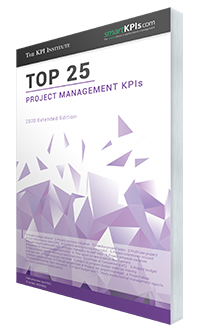1. Performance indicators that measure activity rather than performance will provide less useful data and information overload
A focus on the key objectives of the organisation will keep attention on the essential goals. From these key objectives, it is important to align indicators to the more operational levels.
2. Focusing on short-term targets at the expense of long term objectives is a risk, due to pressure for immediate good performance.
The balanced scorecard approach can help to ensure the inclusion of both long- and short-term objectives.
3. Lack of understanding of outcome measures might lead to this type of PI being underused.
It is worth spending time on developing good outcome measures, though this is not an easy task. The ripple effect can be a helpful method. Measures of processes associated with good outcomes may also be used if outcome measures are not available.
4. Too many financial measures compared with quality measures can lead to skewed performance and neglect of essential areas
The balanced scorecard or a similar approach should be considered to ensure the right balance.
5. Manipulation of data to improve the measured performance is a risk especially when performance is published, ownership of the indicators is weak, or staff reward and censure depend on the indicators.
Perverse incentives can be minimised by setting up counterbalancing PIs, verification of data and by involving staff in the construction of indicators.
6. Danger of specifying data because they may be interesting rather than needed.
Again a focus on the key objectives of the service or function can reduce the risk of ending up with ‘nice to know’ rather than ‘need to know’ indicators. But organisations should recognise the possible need for context indicators.
7. Risk of measuring job processes that are easy to measure rather than those that have the greatest potential value, for example, routine work vs. research projects.
Focus on key objectives and a cascading down to more operational measures can improve the insight into the valuable processes of the organisation.
8. Not targeting the PIs on the relevant stakeholder groups will often lead to the information not being used.
Stakeholder analyses and clear information and
communications strategies can improve the targeting of PIs to stakeholders by understanding their needs. Clarity of purpose is achieved.
9. Not comparing like with like can lead to feelings of unfairness and lack of trust in the performance measures.
Data quality must be high and consensus established on the principles on which comparison is based. Trust can be enhanced by using PIs intelligently, to prompt questions rather than to jump to conclusions.
10. Not understanding user needs may lead to the wrong PIs being collected and efforts put in the wrong areas.
Stakeholder analysis can again provide a useful tool.
11. Not revising the system in response to internal and external changes may lead to an outdated system not measuring the significant things and possibly sending the organisation in the wrong direction.
Regular refinement of individual indicators and the set of indicators should be included in the evaluation and review system of the organisation.


